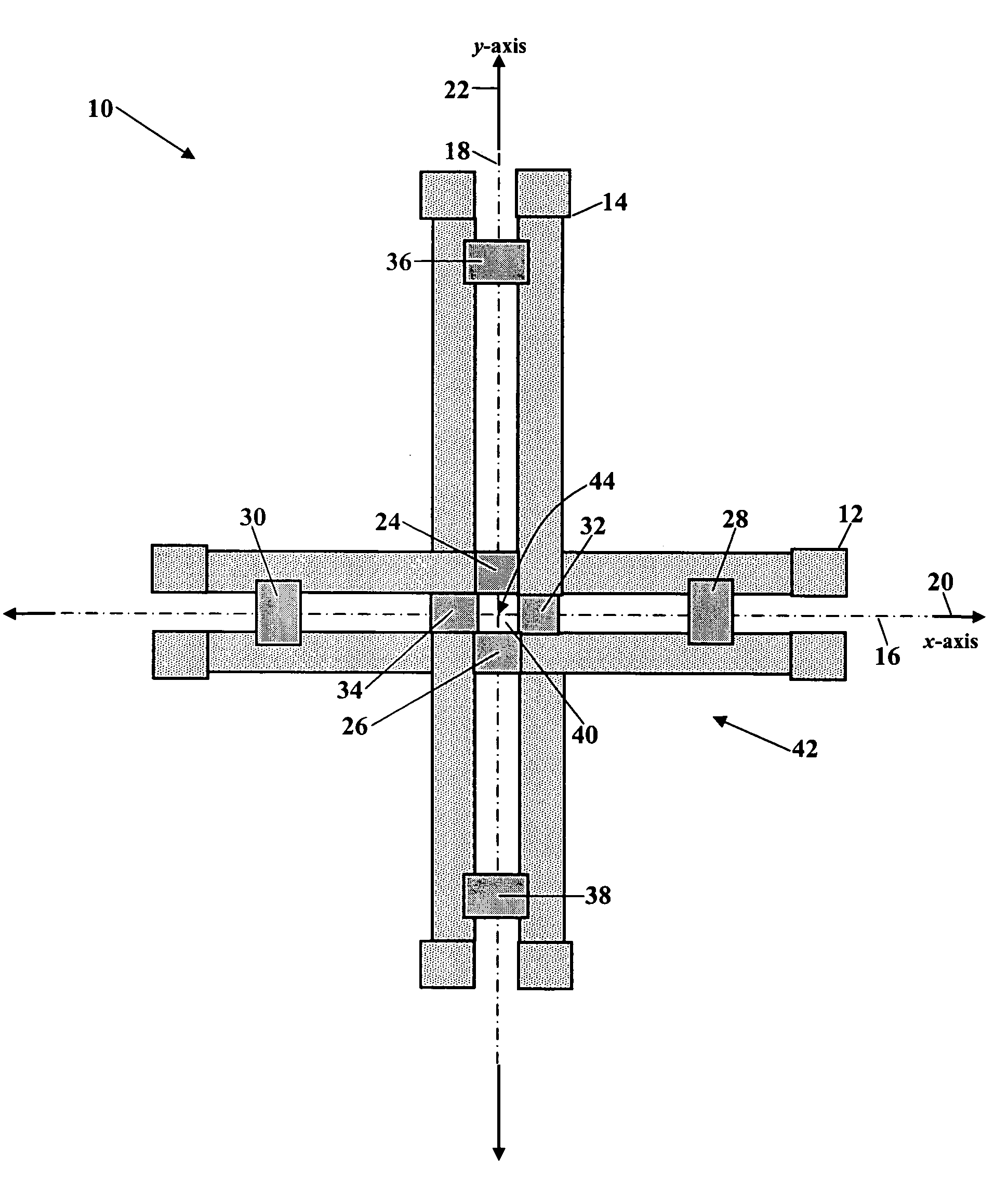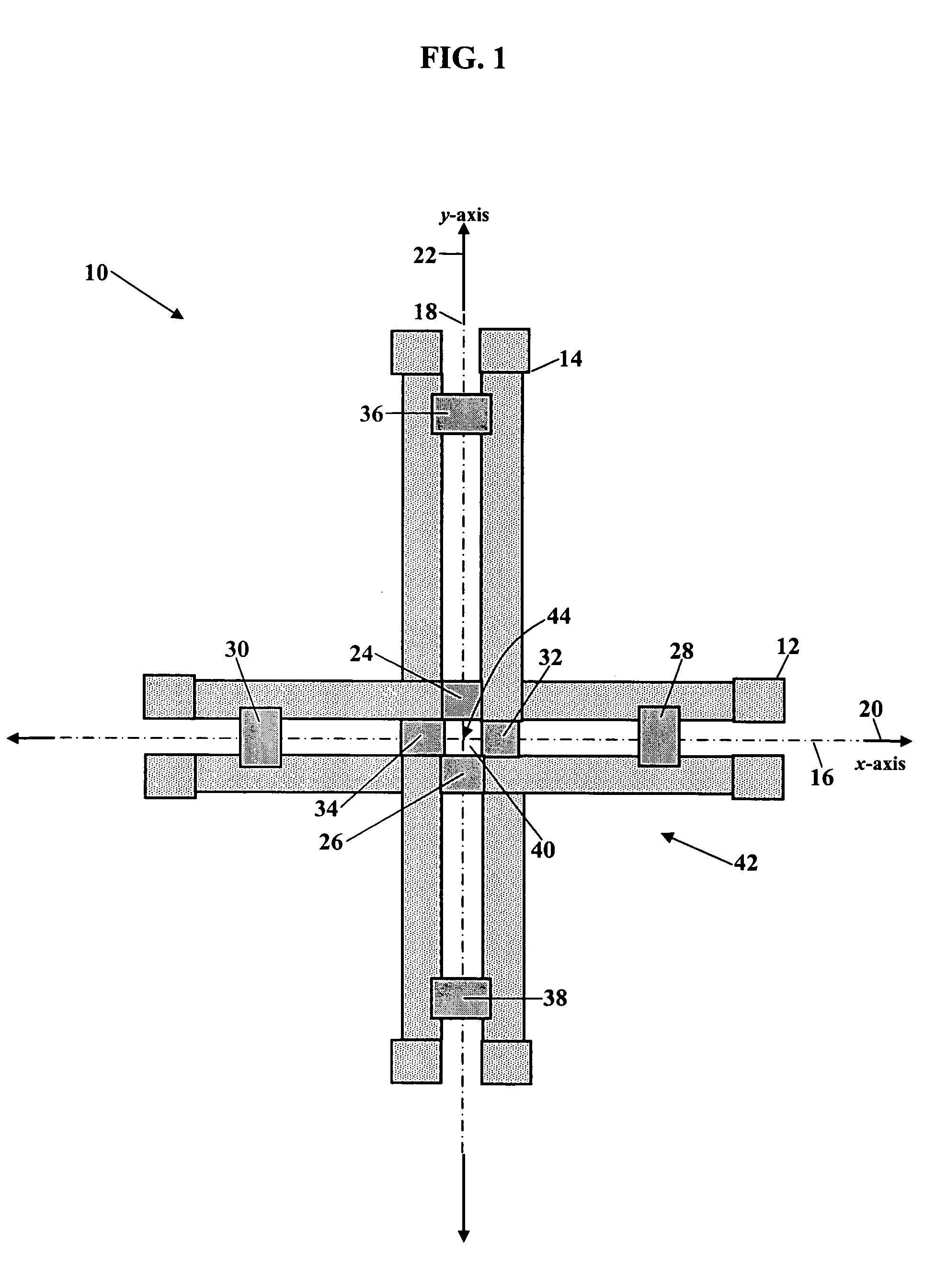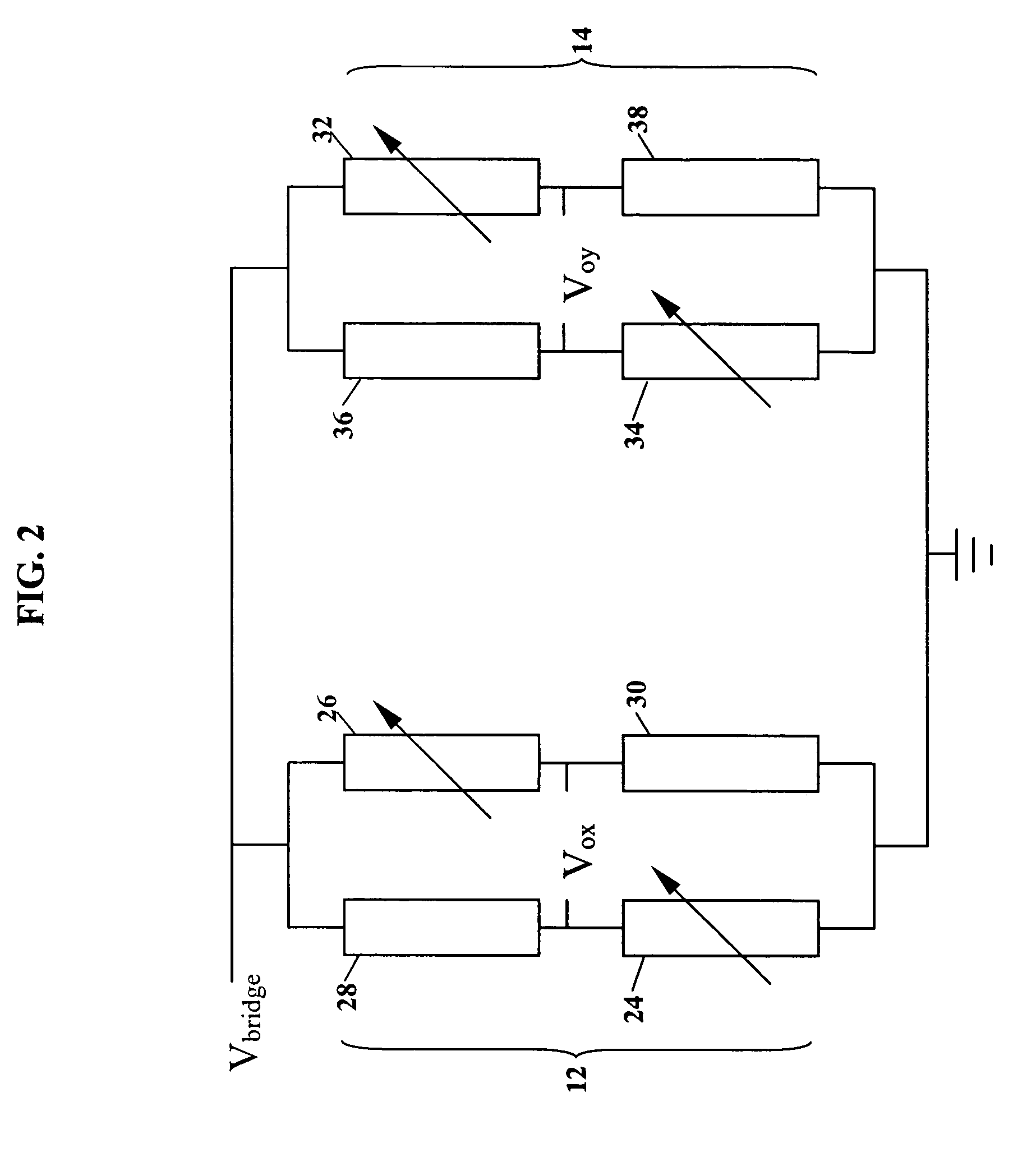Sensors and probes for mapping electromagnetic fields
a technology of electromagnetic field and electromagnetic field, applied in the field of measuring and testing electricity, can solve the problems of electromagnetic field, electromagnetic field, etc., and achieve the effects of reducing the complexity of analysis, reducing the difficulty of detecting and mapping electromagnetic field vectors, and reducing the complexity of electromagnetic field vectors
- Summary
- Abstract
- Description
- Claims
- Application Information
AI Technical Summary
Benefits of technology
Problems solved by technology
Method used
Image
Examples
examples
[0075]The sensors of the present invention are further illustrated by the following non-limiting examples. These non-limiting examples describe various eddy current probes utilizing the sensors of the present invention. Eddy current probes are used to detect cracks in electrically conductive materials. An eddy current probe, more specifically, induces eddy currents in a specimen, and the probe detects perturbations in the induced eddy currents. The perturbations indicate a crack is present.
[0076]FIG. 14 is a schematic drawing of an eddy current probe 74. The probe 74 may comprise a flat, pancake-style coil 76 and any sensors shown in FIGS. 1–8. The probe 74, for simplicity, is shown comprising a solid-state sensor package 78. The sensor package 78 is shown containing the substrate 70, as shown in FIG. 13. At least one sensor 10 is shown formed on the substrate 70. The sensor package 78 is coaxially located along a coil axis 80 and adhesively bonded to the coil 76. The coil 76 has a ...
PUM
 Login to View More
Login to View More Abstract
Description
Claims
Application Information
 Login to View More
Login to View More - R&D
- Intellectual Property
- Life Sciences
- Materials
- Tech Scout
- Unparalleled Data Quality
- Higher Quality Content
- 60% Fewer Hallucinations
Browse by: Latest US Patents, China's latest patents, Technical Efficacy Thesaurus, Application Domain, Technology Topic, Popular Technical Reports.
© 2025 PatSnap. All rights reserved.Legal|Privacy policy|Modern Slavery Act Transparency Statement|Sitemap|About US| Contact US: help@patsnap.com



